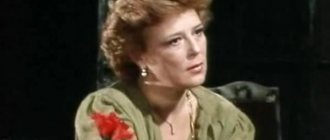Ludwig van Beethoven family
Ludwig's grandfather and father had unique musical talent in the family. Despite his rootless origin, the first managed to become a bandmaster at the court in Bonn. Ludwig van Beethoven Sr. had a unique voice and hearing. After the birth of his son Johann, his wife Maria Theresa, who had an addiction to alcohol, was sent to a monastery. Upon reaching the age of six, the boy began to learn to sing. The child had a great voice. Later, men from the Beethoven family even performed together on the same stage. Unfortunately, Ludwig’s father was not distinguished by the great talent and hard work of his grandfather, which is why he did not reach such heights. What couldn’t be taken away from Johann was his love of alcohol.
Beethoven's mother was the daughter of the Elector's cook. The famous grandfather was against this marriage, but, nevertheless, did not interfere. Maria Magdalena Keverich was already a widow at the age of 18. Of the seven children in the new family, only three survived. Maria loved her son Ludwig very much, and he, in turn, was very attached to his mother.
Childhood and adolescence
The date of birth of Ludwig van Beethoven is not listed in any documents. Historians suggest that the second child in the Beethoven family was born on December 16, 1770, since he was baptized on December 17, and according to Catholic custom, children were baptized the day after birth.
When the boy was three years old, his grandfather, the elder Ludwig Beethoven, died, and his mother was expecting a child. After the birth of another offspring, she could not pay attention to her eldest son. The child grew up as a hooligan, for which he was often locked in the room with the harpsichord. But, surprisingly, he did not break the strings: little Ludwig van Beethoven (later composer) sat down and improvised, playing with both hands at the same time, which is unusual for small children. One day the child’s father found him doing this. Ambition played a role in him. What if his little Ludwig is a genius like Mozart? It was from this time that Johann began to study with his son, but often hired him teachers who were more qualified than himself.
While his grandfather, who was actually the head of the family, was alive, little Ludwig Beethoven lived comfortably. The years after the death of Beethoven Sr. became a difficult ordeal for the child. The family was constantly in need due to his father’s drunkenness, and thirteen-year-old Ludwig became the main breadwinner of their livelihood.
Beethoven's forced music: biography of the composer "under the lash"
Contrary to popular misconceptions, the future outstanding musician, composer and organist did not suffer from hearing impairment as a child. The disease appeared later. He learned to play the harpsichord very early - his father was haunted by the glory of the brilliant Mozart. He wanted to make his son a celebrity. At the age of seven, a tiny, thin boy with a shock of unruly hair was already performing independently on stage, and by that time he had mastered the violin and organ. Who Beethoven was was then known only in his hometown, but soon the world would start talking about him.
Important
Despite the fact that the family did not experience great financial difficulties, the boy had to work from an early age. By the age of twelve, he worked as accompanist of the court theater and ducal organist. Around the same time, the young composer Beethoven published his first independent work - variations on a theme of Dressler's march. This made him famous in his hometown, but real fame was still far away.
Briefly about the composer Beethoven
You can relate to the music of this composer in different ways: some people like it, it brings satisfaction and joy, while others only find it irritating or boring. However, its significance does not change at all. Haydn believed that Beethoven wrote strange and even dark works. Rarely could anyone replicate this man's virtuoso performance in practice. Listeners who were lucky enough to attend his concert noted the unusual manner of performance and the strongest emotions that one could not help but experience while his fingers lightly touched the keys.
Many considered him rude, narcissistic and even dismissive of others, but this was only the first impression. This is exactly how the vulnerable soul of the composer tried to protect himself from the dangers of the surrounding world. With friends and in his home circle, he became open, friendly and kind, always ready to help. The creator’s incredible works - the Lunar and Pathétique sonatas, Christ on the Mount of Olives, the First and Second Symphonies, the Creation of Prometheus - are still loved and appreciated by descendants in the twentieth century.
At the age of thirty, he began to have hearing problems, but this could not break his iron character and indestructible will. Due to his stubborn and tough disposition, as well as his sharp tongue, he had constant problems with the authorities, but even the kings did not dare to touch the musician Beethoven. They were not allowed by the magnitude of his talent, whose unsurpassed genius sometimes pushed him to rash actions.
Ludwig's early years
Often famous people have obscure or unknown origins, making it difficult to understand their established character traits, motivations, and actions. Before understanding the life and fate of the musician, we should say a few words about his ancestors. The composer's grandfather was from the small but picturesque town of Mechelen, which is located in the hills of the Southern Netherlands. He had an incredibly low and “thick” bass, as well as an excellent ear for music, which is why he was hired as a court musician. For many years he sang chorales, sonatas and fantasies for the Prussian king, and then received the honor of becoming the leader of the singing group.
The father of the future genius, Johann, was born in the mid-eighteenth century, or rather in 1740, in the same place where Beethoven was born a few years later. The family never needed anything - the grandfather earned quite well. Little Johann himself had a pure and beautiful tenor by nature, as well as a bandmaster father, which made it possible to easily get a job in the same small musical ensemble (capella) at court. In 1967, he married the daughter of the chief court cook of the ducal castle in Koblenz, Mary Magdalene, nee Keverich. On December 17, 1770, in the family house in the town of Bonn, she gave birth to a baby, whom it was decided to name Ludwig.
The boy grew up smart, but he often got caught for mischief and mischief. True, there was no time to be especially naughty - impressed by the glory of the boy musician Mozart, the father decided to make something similar out of his son. From the age of four he began teaching the little one to play the harpsichord and violin. All this was easy for the boy, but it was not possible to turn him into a “monkey at the piano”. At the age of eight, he already gave his debut concert in Cologne. “Daddy,” meanwhile, began to drink, take friends home, and did not even hesitate to get Ludwig out of bed to please his drinking companions by playing the clavichord installed in one of the rooms.
The youth of a brave musician
A difficult childhood left an indelible mark on Beethoven’s character and lifestyle. By the age of nine, having realized that it was impossible to make money on the “phenomenal” boy, his father entrusted him to his friends. They taught him to play the violin and organ, but the best years of his childhood came when the famous composer and organist Christian Gottlob Nefe arrived in Bonn in 1980. He instantly recognized the young man’s real talent, so he took him on as a student and introduced him to the works of Handel, Bach, Haydn and Mozart, which impressed the guy so much that he even lost sleep.
At the age of eleven, Ludwig was hired as a court organist, and at twelve his first composition was published. He attended school, but when his grandfather died, his financial situation plummeted and he had to quit his studies. However, by that time the smart boy had already mastered French, Italian and Latin, and also read books avidly. He read Homer and Plutarch, Schiller, Goethe and Shakespeare, although it is quite difficult for a boy to call them interesting.
It was then that he began to actively write music, but tried not to advertise his works, which in the future he would repeatedly redo and improve. Among his children's works, which have been preserved in an unprocessed form, one can name three sonatas and a couple of simple songs. When the composer turned sixteen, no one knew who Beethoven was. In 1978, he visited Vienna for the first time, and when he heard the young Mozart’s extraordinary style of playing, he was amazed and said that a great future awaited him. It was there that he first learned about the revolution that took place in France. This event inspired Ludwig so much that he even wrote the “Song of a Free Man.”
Attitude to study
As contemporaries and friends of the musical genius noted, such an inquisitive mind as Beethoven possessed was rare in those days. Interesting facts from the composer’s life are also connected with his arithmetic illiteracy. Perhaps the talented pianist failed to master mathematics due to the fact that, without graduating from school, he was forced to work, or perhaps the whole point is in a purely humanitarian mindset. Ludwig van Beethoven cannot be called ignorant. He read volumes of literature, adored Shakespeare, Homer, Plutarch, was fond of the works of Goethe and Schiller, knew French and Italian, and mastered Latin. And it was precisely the inquisitiveness of his mind that he owed his knowledge, and not the education received at school.
Hearing loss
The works of Ludwig Beethoven began to enjoy wide popularity in the nineties. During his ten years in Vienna, he wrote three piano concertos and about twenty sonatas. His works were well published and enjoyed success. But in 1796, a disease began to develop, which led to complete deafness.
Due to his illness, Beethoven rarely left the house. He became withdrawn and sullen. Surprisingly, his best works were created precisely when he lost his hearing. Works of recent years - “Solemn Mass”, Symphony No. 9. The last one was performed in 1824. The audience gave Beethoven a standing ovation that lasted so long that the police had to pacify the piano fans.
Beethoven's teachers
From early childhood, Beethoven's music, unlike the works of his contemporaries, was born in his head. He played variations on all kinds of compositions known to him, but due to his father’s conviction that it was too early for him to compose melodies, the boy did not record his compositions for a long time.
The teachers his father brought to him were sometimes just his drinking buddies, and sometimes they became mentors to the virtuoso.
The first person Beethoven himself remembers with warmth was his grandfather’s friend, the court organist Eden. Actor Pfeiffer taught the boy to play the flute and harpsichord. For some time, Monk Koch taught the gifted child to play the organ, and then Hanzman. Then the violinist Romantini appeared.
When the boy was 7 years old, his father decided that the work of Beethoven Jr. should become public knowledge, and organized his concert in Cologne. According to reviews from experts, Johann realized that Ludwig did not make an outstanding pianist, and, nevertheless, his father continued to bring teachers to his son.
The beginning of creativity
Beethoven was only fifteen years old when he was entrusted with the position of organist of the chapel. And seven years later, on the orders of one of his mentors, he left for Vienna to continue his music studies. There he took lessons from Haydn and Salieri.
The most significant musical works of Beethoven in the eighties of the eighteenth century:
- "Pathétique Sonata"
- "Moonlight Sonata".
- "Kreutzer Sonata".
- Opera "Fidelio".
Beethoven's earliest musical works were not published. But children's sonatas and the song “Marmot” have survived to this day.
Mentors
Soon Christian Gottlob Nefe arrived in the city of Bonn. Whether he himself came to Beethoven’s house and expressed a desire to become a teacher of the young talent, or whether Father Johann had a hand in this is unknown. Nefe became the mentor whom Beethoven the composer remembered all his life. After his confession, Ludwig even sent Nefa and Pfeiffer some money as a token of gratitude for the years of training and help provided to him in his youth. It was Nefe who helped promote the thirteen-year-old musician at court. It was he who introduced Beethoven to the work of Bach and other luminaries of the musical world.
Beethoven's work was influenced not only by Bach - the young genius idolized Mozart. Once upon his arrival in Vienna, he was even lucky enough to play for the great Amadeus. At first, the great Austrian composer received Ludwig’s playing coldly, mistaking it for a piece he had learned previously. Then the stubborn pianist suggested that Mozart himself set the theme for the variations. From that moment on, Wolfgang Amadeus listened without interruption to the young man’s play, and subsequently exclaimed that the whole world would soon be talking about his young talent. The classic's words became prophetic.
Beethoven managed to take several playing lessons from Mozart. Soon the news came about the imminent death of his mother, and the young man left Vienna.
Afterwards, his teacher was such a famous composer as Joseph Haydn, but they did not find a common language. And one of the mentors, Johann Georg Albrechtsberger, considered Beethoven to be completely mediocrity and a person incapable of learning anything.
Early creativity
Beethoven received his initial musical education under the guidance of his father, a singer at the court chapel of the Elector of Cologne in Bonn. From 1780 he studied with the court organist K. G. Nefe. At the age of less than 12, Beethoven successfully replaced Nefe; At the same time, his first publication came out (12 variations for the clavier on the march of E. K. Dresler). In 1787, Beethoven visited W. A. Mozart in Vienna, who highly appreciated his art as an improvising pianist. Beethoven's first stay in the then musical capital of Europe was short-lived (after learning that his mother was dying, he returned to Bonn). In 1789 he entered the Faculty of Philosophy at the University of Bonn, but did not study there for long. In 1792, Beethoven finally moved to Vienna, where he first improved in composition with J. Haydn (with whom he did not have a good relationship), then with I. B. Schenk, I. G. Albrechtsberger and A. Salieri. Until 1794 he enjoyed the financial support of the Elector, after which he found wealthy patrons among the Viennese aristocracy. Beethoven soon became one of the most fashionable salon pianists in Vienna. Beethoven's public debut as a pianist took place in 1795. His first major publications dated the same year: three piano trios Op. 1 and three sonatas for piano op. 2. According to contemporaries, Beethoven’s playing combined a stormy temperament and virtuoso brilliance with a wealth of imagination and depth of feeling. It is not surprising that his most profound and original works from this period are for piano. Before 1802, Beethoven created 20 piano sonatas, including the “Pathetique” (1798) and the so-called “Moonlight” (No. 2 of two “fantasy sonatas” op. 27, 1801). In a number of sonatas, Beethoven overcomes the classical three-movement scheme by placing an additional movement - a minuet or scherzo - between the slow movement and the finale; thus the sonata cycle is likened to a symphonic cycle. Between 1795 and 1802 the first three piano concertos, the first two symphonies (1800 and 1802), 6 string quartets (Op. 18, 1800), eight sonatas for violin and piano (including “Spring Sonata” Op. 24, 1801), 2 sonatas for cello and piano op. 5 (1796), Septet for oboe, horn, bassoon and strings Op. 20 (1800), many other chamber ensemble works. Beethoven's only ballet, “The Works of Prometheus” (1801), dates back to the same period, one of the themes of which was subsequently used in the finale of the “Eroic Symphony” and in the monumental piano cycle of 15 variations with fugue (1806). From a young age, Beethoven amazed and delighted his contemporaries with the scale of his plans, the inexhaustible ingenuity of their implementation and the tireless desire for something new.
Character of a musician
The history of Beethoven and the ups and downs of his life left a noticeable imprint on his work, made his face gloomy, but did not break the persistent and strong-willed young man. In July 1787, the person closest to Ludwig, his mother, dies. The young man suffered the loss hard. After the death of Mary Magdalene, he himself fell ill - he was struck down by typhus, and then smallpox. The young man's face was left with ulcers, and his eyes were affected by myopia. The still immature youth takes care of his two younger brothers. His father had completely drunk himself by that time and died 5 years later.
All these troubles in life affected the character of the young man. He became withdrawn and unsociable. He was often sullen and harsh. But his friends and contemporaries claim that, despite such an unbridled temper, Beethoven remained a true friend. He helped all his friends who were in need with money, provided for his brothers and their children. It is not surprising that Beethoven’s music seemed gloomy and gloomy to his contemporaries, because it was a complete reflection of the inner world of the maestro himself.
Personal life
Very little is known about the spiritual experiences of the great musician. Beethoven was attached to children, loved beautiful women, but never created a family. It is known that his first bliss was the daughter of Elena von Breuning, Lorchen. Beethoven's music of the late 80s was dedicated to her.
Juliet Guicciardi became the first serious love of the great genius. This is not surprising, because the fragile Italian was beautiful, flexible and had an inclination for music, and the already mature thirty-year-old teacher Beethoven focused his attention on her. Interesting facts from the life of a genius are connected specifically with this person. Sonata No. 14, later called “Moonlight,” was dedicated to this particular angel in the flesh. Beethoven wrote letters to his friend Franz Wegeler, in which he confessed his ardent feelings for Juliet. But after a year of studies and tender friendship, Juliet married Count Gallenberg, whom she considered more talented. There is evidence that a few years later their marriage was unsuccessful, and Juliet turned to Beethoven for help. The former lover gave money, but asked not to come again.
Teresa Brunswik, another student of the great composer, became his new hobby. She devoted herself to raising children and charity. Until the end of his life, Beethoven was connected with her by correspondence.
Bettina Brentano, a writer and friend of Goethe, became the composer's latest passion. But in 1811, she too connected her life with another writer.
Beethoven's longest lasting affection was his love of music.
Music of the great composer
Beethoven's work has immortalized his name in history. All his works are masterpieces of world classical music. During the composer's lifetime, his performance style and musical compositions were innovative. Before him, no one had played or composed melodies in the lower and upper registers at the same time.
Art historians distinguish several periods in the composer’s work:
- Early, when variations and plays were written. Then Beethoven composed several songs for children.
- The first, the Viennese period, dates from 1792–1802. The already famous pianist and composer completely abandons the performance style characteristic of him in Bonn. Beethoven's music becomes absolutely innovative, lively, sensual. The manner of performance makes the audience listen and absorb the sounds of beautiful melodies in one breath. The author numbers his new masterpieces. At this time he wrote chamber ensembles and pieces for piano.
- 1803 – 1809 characterized by dark works reflecting the raging passions of Ludwig van Beethoven. During this period he wrote his only opera, Fidelio. All compositions of this period are filled with drama and anguish.
- The music of the last period is more measured and difficult to perceive, and the audience did not perceive some concerts at all. Ludwig van Beethoven did not accept this reaction. The sonata dedicated to Ex-Duke Rudolf was written at this time.
Until the end of his days, the great, but already very ill, composer continued to compose music, which would later become a masterpiece of the world musical heritage of the 18th century.
Beethoven's works (page 1 of 2)
Topic: Beethoven's works.
Plan:
1.
Introduction.
2.
Early creativity.
3.
The heroic principle in Beethoven’s work.
4.
Still an innovator in his later years.
5.
Symphonic creativity.
Ninth Symphony 1. Introduction
Ludwig van BEETHOVEN is a German composer, representative of the Viennese classical school. He created a heroic-dramatic type of symphony (3rd “Heroic”, 1804, 5th, 1808, 9th, 1823, symphonies; opera “Fidelio”, final version 1814; overtures “Coriolanus”, 1807, “Egmont”, 1810; a number of instrumental ensembles, sonatas, concerts). Complete deafness, which befell Beethoven in the middle of his creative journey, did not break his will. Later works are distinguished by their philosophical character. 9 symphonies, 5 piano concertos; 16 string quartets and other ensembles; instrumental sonatas, including 32 for piano (among them the so-called “Pathetique”, 1798, “Lunar”, 1801, “Appassionata”, 1805), 10 for violin and piano; "Solemn Mass" (1823).
Beethoven received his initial musical education under the guidance of his father, a singer in the court chapel of the Elector of Cologne in Bonn. From 1780 he studied with the court organist K. G. Nefe. At the age of less than 12, Beethoven successfully replaced Nefe; At the same time, his first publication came out (12 variations for the clavier on the march of E. K. Dresler). In 1787, Beethoven visited W. A. Mozart in Vienna, who highly appreciated his art as an improvising pianist. Beethoven's first stay in the then musical capital of Europe was short-lived (after learning that his mother was dying, he returned to Bonn).
In 1789 he entered the Faculty of Philosophy at the University of Bonn, but did not study there for long. In 1792, Beethoven finally moved to Vienna, where he first improved in composition with J. Haydn (with whom he did not have a good relationship), then with I. B. Schenk, I. G. Albrechtsberger and A. Salieri. Until 1794 he enjoyed the financial support of the Elector, after which he found wealthy patrons among the Viennese aristocracy.
Beethoven soon became one of the most fashionable salon pianists in Vienna. Beethoven's public debut as a pianist took place in 1795. His first major publications dated the same year: three piano trios Op. 1 and three sonatas for piano op. 2. According to contemporaries, Beethoven’s playing combined a stormy temperament and virtuoso brilliance with a wealth of imagination and depth of feeling. It is not surprising that his most profound and original works from this period are for piano.
Before 1802, Beethoven created 20 piano sonatas, including the “Pathetique” (1798) and the so-called “Moonlight” (No. 2 of two “fantasy sonatas” op. 27, 1801). In a number of sonatas, Beethoven overcomes the classical three-part scheme by placing an additional part - a minuet or scherzo - between the slow movement and the finale, thereby making the sonata cycle similar to a symphonic cycle. Between 1795 and 1802 the first three piano concertos, the first two symphonies (1800 and 1802), 6 string quartets (Op. 18, 1800), eight sonatas for violin and piano (including “Spring Sonata” Op. 24, 1801), 2 sonatas for cello and piano op. 5 (1796), Septet for oboe, horn, bassoon and strings Op. 20 (1800), many other chamber ensemble works. Beethoven's only ballet, “The Works of Prometheus” (1801), dates back to the same period, one of the themes of which was subsequently used in the finale of the “Eroic Symphony” and in the monumental piano cycle of 15 variations with fugue (1806). From a young age, Beethoven amazed and delighted his contemporaries with the scale of his plans, the inexhaustible ingenuity of their implementation and the tireless desire for something new.
3. The heroic principle in Beethoven’s work.
In the late 1790s, Beethoven began to develop deafness; no later than 1801, he realized that this disease was progressing and threatened with complete loss of hearing. In October 1802, while in the village of Heiligenstadt near Vienna, Beethoven sent his two brothers a document of extremely pessimistic content, known as the “Heiligenstadt Testament”. Soon, however, he managed to overcome the mental crisis and returned to creativity. The new - so-called middle - period of Beethoven's creative biography, the beginning of which is usually attributed to 1803 and the end to 1812, is marked by an intensification of dramatic and heroic motifs in his music. The author’s subtitle of the Third Symphony, “Heroic” (1803), could serve as an epigraph to the entire period; Initially, Beethoven intended to dedicate it to Napoleon Bonaparte, but upon learning that he declared himself emperor, he abandoned this intention. Such works as the Fifth Symphony (1808) with its famous “motif of fate”, the opera “Fidelio” based on the plot of a captive fighter for justice (the first 2 editions 1805-1806, the final one - 1814), the overture “Coriolanus” are also imbued with a heroic, rebellious spirit "(1807) and "Egmont" (1810), the first part of the "Kreutzer Sonata" for violin and piano (1803), the piano sonata "Appassionata" (1805), the cycle of 32 variations in C minor for piano (1806).
Beethoven's style of the middle period is characterized by an unprecedented scope and intensity of motivic work, increased scale of sonata development, and striking thematic, dynamic, tempo, and register contrasts. All these features are also inherent in those masterpieces of 1803-12 that are difficult to attribute to the actual “heroic” line. These are Symphonies No. 4 (1806), 6 (“Pastoral”, 1808), 7 and 8 (both 1812), Concertos for piano and orchestra No. 4 and 5 (1806, 1809) Concerto for violin and orchestra (1806), Sonata Op. 53 for piano (Waldstein Sonata or Aurora, 1804), three string quartets Op. 59, dedicated to Count A. Razumovsky, at whose request Beethoven included Russian folk themes in the first and second of them (1805-1806), Trio for piano, violin and cello op. 97, dedicated to Beethoven's friend and patron Archduke Rudolf (the so-called "Archduke Trio", 1811).
By the mid-1800s, Beethoven was already universally revered as by far the first composer of his time. In 1808, he gave what was essentially his last concert as a pianist (a later charity performance in 1814 was unsuccessful, since by that time Beethoven was already almost completely deaf). At the same time he was offered the post of court conductor in Kassel. Not wanting to allow the composer to leave, three Viennese aristocrats allocated him a high salary, which, however, soon depreciated due to circumstances related to the Napoleonic wars. Nevertheless, Beethoven remained in Vienna.
4. Still an innovator in his later years
In 1813-1815 Beethoven composed little. He experienced a decline in moral and creative strength due to deafness and a breakdown in his matrimonial plans. In addition, in 1815, the care of his nephew (the son of his late brother), who had a very difficult disposition, fell on his shoulders. Be that as it may, in 1815 a new, relatively speaking, late period of the composer’s work began. Over the course of 11 years, 16 large-scale works came from his pen: two sonatas for cello and piano (Op. 102, 1815), five sonatas for piano (1816-22), piano Variations on Diabelli's Waltz (1823), Solemn Mass ( 1823), Ninth Symphony (1823) and 6 string quartets (1825-1826).
In the music of late Beethoven, such a feature of his previous style as a wealth of contrasts is preserved and even intensified. Both in its dramatic and ecstatically jubilant moments, and in its lyrical or prayerful and meditative episodes, this music appeals to the extreme possibilities of human perception and empathy. For Beethoven, the act of composing was a struggle with inert sonic matter, as eloquently evidenced by the hasty and often illegible recordings of his drafts; the emotional atmosphere of his later opuses is largely determined by the feeling of painfully overcome opposition.
The late Beethoven paid little attention to the conventions accepted in performing practice (a characteristic touch: upon learning that violinists were complaining about technical difficulties in his quartet, Beethoven exclaimed: “What do I care about their violins when inspiration speaks in me!”). He has a special predilection for extremely high and extremely low instrumental registers (which is undoubtedly associated with a narrowing of the spectrum of sounds accessible to his hearing), for complex, often highly sophisticated polyphonic and variational forms, for expanding the traditional scheme of a four-part instrumental cycle by including into it additional parts or sections.
One of Beethoven’s most daring experiments in updating the form is the huge choral finale of the Ninth Symphony based on the text of F. Schiller’s ode “To Joy.” Here, for the first time in the history of music, Beethoven carried out a synthesis of the symphonic and oratorio genres. The Ninth Symphony served as a model for artists of the Romantic era, fascinated by the utopia of synthetic art capable of transforming human nature and spiritually uniting the masses of people.
As for the esoteric music of the latest sonatas, variations and especially quartets, it is customary to see in it a harbinger of some important principles of thematic organization, rhythm, and harmony that developed in the 20th century. In the Solemn Mass, which Beethoven considered his best creation, the pathos of the universal message and the sophisticated, sometimes almost chamber writing with elements of stylization in an archaic spirit form a unique unity.
In the 1820s, Beethoven's fame went far beyond the borders of Austria and Germany. The solemn mass, written according to an order received from London, was first performed in St. Petersburg. Although the work of the late Beethoven did not correspond much to the tastes of the contemporary Viennese public, who gave their sympathies to G. Rossini and lighter forms of chamber music, his fellow citizens realized the true scale of his personality. When Beethoven died, about ten thousand people saw him off on his last journey.
Disease
Beethoven was an extraordinary and very hot-tempered person. Interesting facts from life relate to the period of his illness. In 1800, the musician began to experience ringing in his ears. After some time, doctors admitted that the disease was incurable. The composer was on the verge of suicide. He left society and high society and lived in solitude for some time. After some time, Ludwig continued to write from memory, reproducing the sounds in his head. This period in the composer’s work is called “heroic”. By the end of his life, Beethoven became completely deaf.
The last journey of the great composer
Beethoven's death was a huge grief for all fans of the composer. He died on March 26, 1827. The reason was not clear. For a long time, Beethoven suffered from liver disease and was tormented by abdominal pain. According to another version, the genius was sent to the next world by mental anguish associated with the sloppiness of his nephew.
Recent data obtained by British scientists suggests that the composer could have been unintentionally poisoned by lead. The content of this metal in the body of the musical genius was 100 times higher than the norm.









